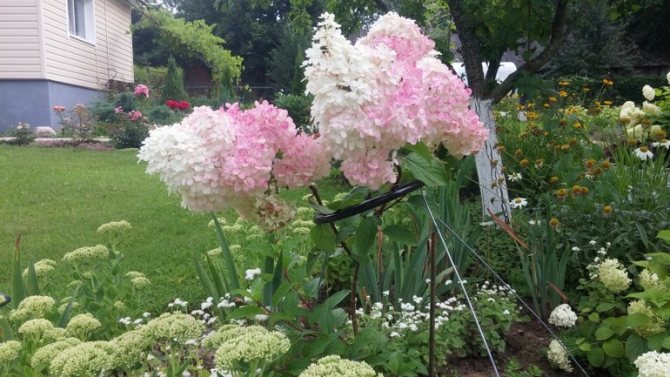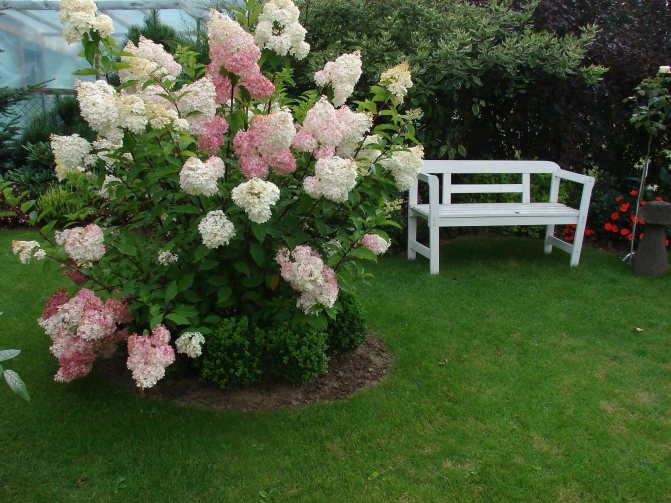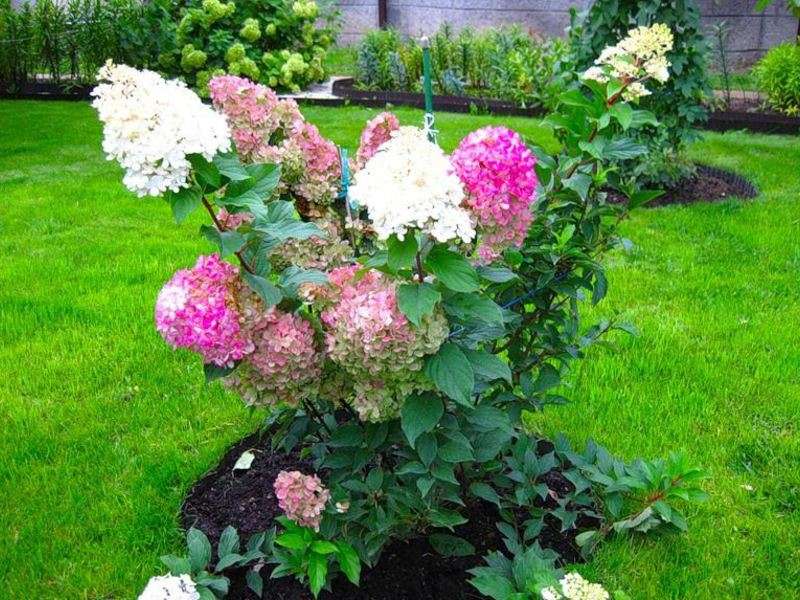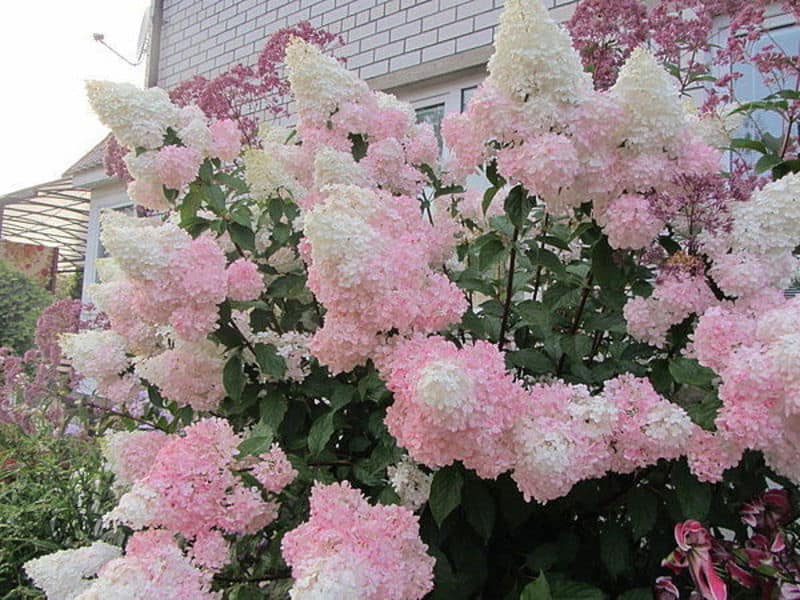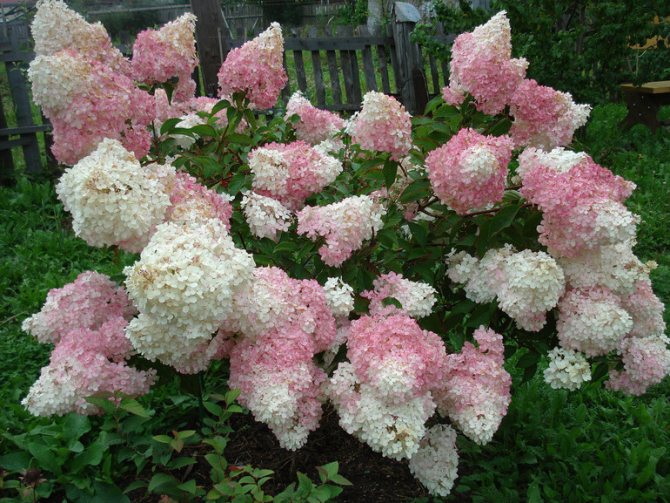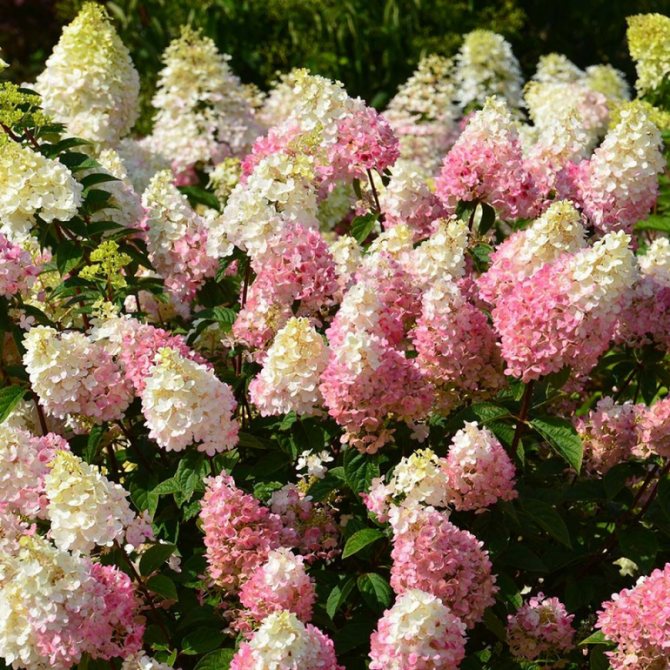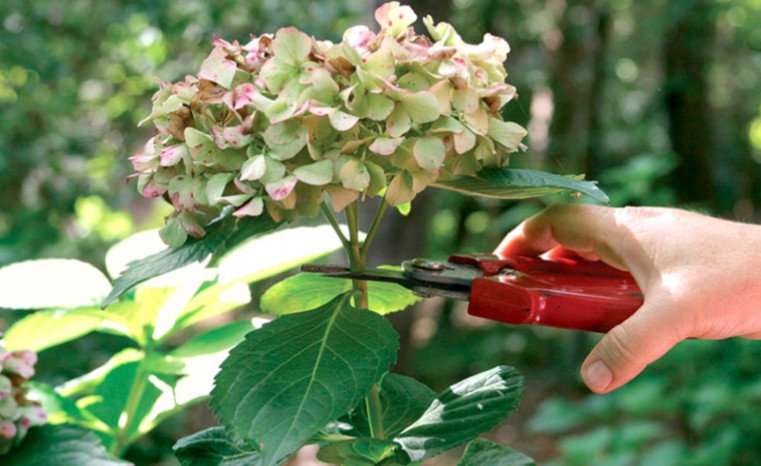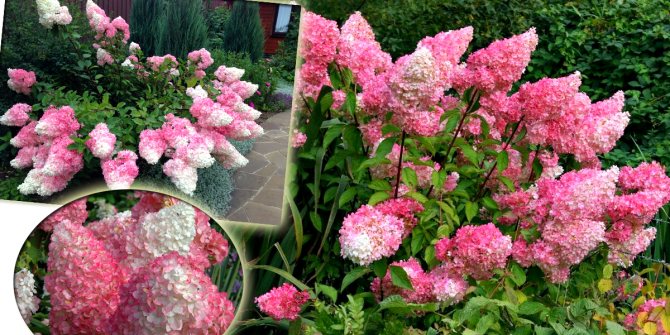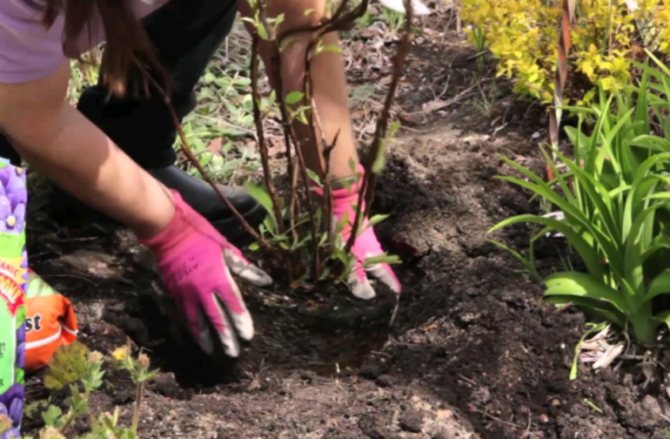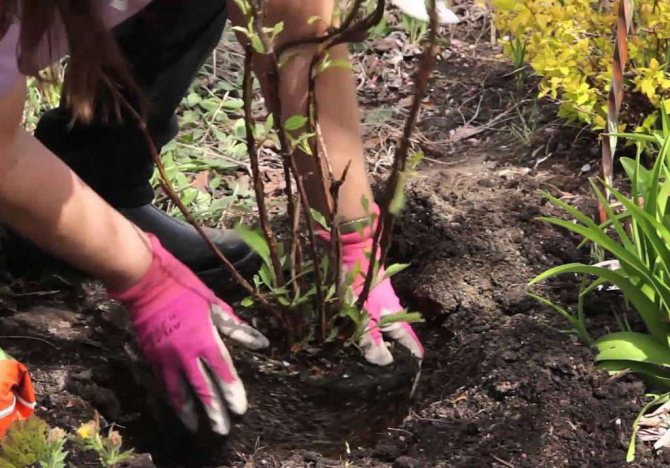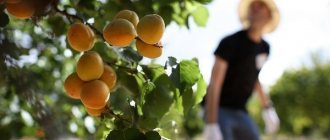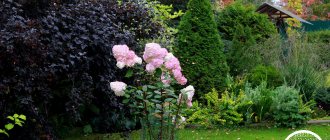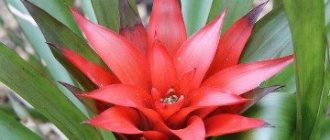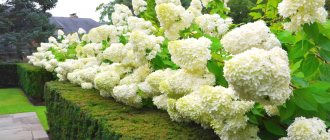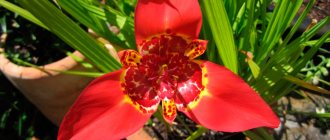Hydrangea varieties are impressive in their variety. They are all beautiful and do not require any special care. Stalked, paniculate, oakleaf hydrangeas have individual characteristics. One of the brightest representatives of this plant is the panicle hydrangea - Vanilla Freise; planting and care in the open field does not require the creation of special conditions for her. A guest from the Far East has been cultivated for many years in all regions of the country.
Description of the variety

Variety panicle hydrangea vanille fraise was bred by the French gardener-breeder Eric Renaud after 11 years of careful and painstaking breeding work. The variety was fully developed by 2003 and won many prizes at the exhibition in the Netherlands. This species turned out to be incredibly popular due to the beautiful lush pink and white inflorescences and the high frost resistance and unpretentiousness of the plant.
The variety of vanilla fries in appearance is low fast-growing shrub with a diameter of 1.5-2 meters... The crown has an asymmetrical shape. The inflorescences are large and dense, pyramidal in pink-white color and outwardly surprisingly reminiscent of a vanilla-strawberry ice cream cone. The blossoming flowers of the initially white color gradually turn pink. Since the inflorescences bloom and change color gradually, the bush looks very elegant, playing with all shades from snow-white to dark crimson. Leaves are dark green, rough to the touch, oval ovoid. Long flowering from late July to September. The plant has a distinctive feature, it able to withstand very high frosts up to 35-38 degrees.
Young plants can freeze a little in winter, but easily recover in spring. Therefore, in severe frosts, it is advisable to cover the plant and sprinkle the near-trunk soil with sawdust.
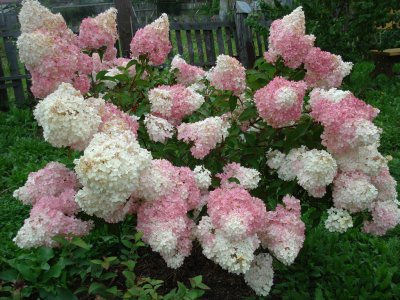

Suitable for almost all regions, except for the hottest and driest, as the plant loves moist soil and partial shade. Also, regions with calcareous soils are not suitable.
This variety is grown for garden and park landscaping and decorative hedges. You can create compositions with other plants or plant them separately.
Characteristic features of hydrangeas
Hydrangea paniculata belongs to the genus Hortensia and the Hortensia family. Under natural conditions, these beautifully flowering perennials can be found on the Japanese islands, in most provinces of China, as well as in the southern part of Sakhalin Island.
Interesting! This beautiful perennial was cultivated many decades ago, and is now actively used by landscape designers to create various park compositions. And gardeners are happy to grow various varieties of panicle hydrangeas in their gardens.
Distinctive features of these plants:
- this tree or bushes reach a height of 1.5 to 10 m;
- the root system is not very deep, but their diameter exceeds the size of the crown of hydrangeas;
- foliage of hydrangeas is oval, in length it can reach 10-12 cm;
- flowers are collected in paniculate inflorescences of a pyramidal shape, the length of which is about 24 cm;
- flowers of two types: sterile, the size of which can be over 2 cm, the color of the petals - white with a green tint gradually changes to pink; small, from which fruits appear in the future, petals on such flowers fall off quickly;
- fruits - capsules, in which there is a lot of small seed material; when ripe, the capsule cracks in the upper part;
- the first buds appear on this flowering perennial 4-5 seasons after the seedlings are planted in a permanent place.
It is interesting: hydrangea seeds have almost 100% germination.
Planting and leaving
The plant is light-requiring, but feels great in the shade. It is necessary to plant a plant on the sunny or shaded side into the planting pit with the addition of sour peat. Vanilla fries loves fertile, lightweight moist soils with high acidity.
The plant should not be kept in soils with a high lime content. This can cause illness and death.
In cold regions, planting is best done in spring. The distance between plants should be at least 1-1.5 meters. After planting, the seedlings must water abundantly and loosen a little... The general watering regime is plentiful, especially in dry weather. It is best to use collected rainwater. Top dressing must be done with mineral fertilizers and liquid manure every two weeks from April to August. Good feeding will create conditions for rapid growth and abundant flowering.
You can find out more about the rules for planting and caring for panicle hydrangea outdoors here.
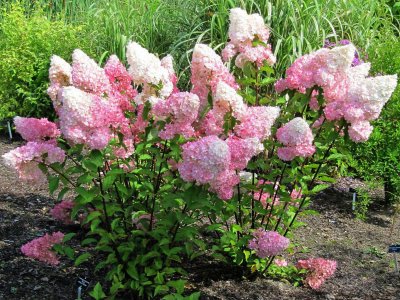

Use in landscape design
Unpretentiousness to care and the colorful appearance of the buds are increasingly attracting the attention of gardeners. The shrub can be planted both alone and as a hedge, which is justified by its impressive height. The use of culture in landscape design is also justified by the fact that shrubs should be transplanted every 3-5 years, so you can decorate all garden plots.
Considering that Vanilla Fraze is suitable for pruning a bush, it is possible to create plants of various unusual shapes, and long flowering times only strengthen the gardener's desire to use this variety in landscape design.
Reproduction methods
Hydrangea Vanilla Fries can multiply by dividing the bush, cuttings and layering.
For cuttings choose a part of the stem with five to six knots, which is buried in damp ground for two knots. Previously, the lower leaves must be completely cut off. The stalk should be covered with a jar and protected from direct sunlight.
The optimal propagation period of this variety for central Russia is from 10 to 15 June. In a later period, the plant may not take root.
When the plant has grown enough, it can be propagated. dividing the bush... It is necessary to divide the bush very carefully so as not to damage the root system. The division of the bush can be done from spring to autumn. But with the autumn division, the seedlings must be well protected from the cold.
For propagation by layering, a suitable young branch is folded back and instilled in a new place at a depth of 15 cm. After the root system is formed at the branch, it is separated from the mother plant and planted in a separate place.
In order for the shoot not to straighten, it must be secured with special brackets. To speed up the engraftment in a new place, it is recommended to make a small incision on the stem.
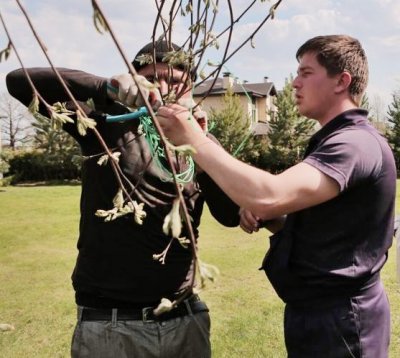

Preparing for winter
Pruning is carried out in the spring before the start of active growth, removing frozen and dried stems.
Pruning for this variety has essential: The deeper the pruning, the fuller the new inflorescences will be. In the fall, before wintering, you need to remove all old dried inflorescences.
ATTENTION. Pruning should not be done during sap flow.
The plant is high frost resistance. Older Vanilla Frize hydrangeas only need shelter in very cold climates. In the garden, the plant should be protected from snow from the roof and debris after clearing the paths.
Young plants need a mandatory shelter for the winter, they must be carefully protected with small sawdust or dry grass.
Water mode
Panicle hydrangea Vanilla Freisy, like any other, prefers well-moistened soil. In order for this perennial to develop well and delight with its extraordinary flowering, it is necessary to prevent the top layer of the earth from drying out. For this, the surfaces around the bushes are mulched with rotted sawdust or peat. If the weather is dry and hot, then the plant will have to be watered abundantly, 30-50 liters under each bush twice a week. Under normal summer temperatures, watering is sufficient once every seven days.
Diseases and pests
The plant is quite resistant to diseases and insects. The most common diseases are chlorosis, powdery mildew and green leaf aphids.
Chlorosis Is a disease caused by excess humus or lime in the soil. With this disease, the leaves begin to fade and lose their usual color.
Chlorosis treatment is carried out special solutions: nitric acid potassium and copper sulfate with an interval of 3-4 days.


Powdery mildew is caused by excessive moisture. For treatment, you need to reduce the humidity of the air, and treat the leaves and stems with a composition of copper sulfate with the addition of soap.
Leaf aphids are effectively destroyed with special garlic solution... You need to take 150 grams of garlic in 10 liters of water and leave for two to three days. Then add 50 g of soap and spray the hydrangea every 5-6 days.
The exquisite beauty of hydrangea Vanilla Fries will be a real decoration for your garden. It is very unpretentious and, with proper care and watering, will actively grow and delight you with its beautiful vanilla pink inflorescences for many years.
What the plant is sick with
Pests do not visit hydrangea bushes, only because of the lack of moisture, the leaves begin to dry:
| Cause | Solution to the problem |
| Leaves turn yellow | A change in the shade of the leaf plates is caused by a lack of light or moisture, low acidity of the soil. |
| There is no flowering | Many problems of panicle hydrangea are due to the soil - it must be nutritious and with a slightly acidic reaction. |
Vanilla Freise is a beautiful shrub with large inflorescences that stay on the bush for 2-3 months. According to the reviews of experienced gardeners, the plant needs minimal care and timely watering, then the inflorescences will show themselves in all their beauty.
Photo
More photos of hydrangea paniculate vanilla freesi, see below:
The varieties Phantom, Bobo, Limelight, Kyushu, Pinky Winky and Grandiflora look no less impressive and beautiful. On our website you will find advice from our experts on planting and caring for the beautiful panicle hydrangea.
The soil
The qualitative composition of the soil must be taken care of in advance. If the soil for some reason is not done in the fall, then you can do this before planting seedlings. However, given that the land requires some changes in the composition, it must be done in at least two, and preferably three weeks. Hydrangeas love acidic soil and Vanilla Fries is no exception. Organic and mineral fertilizers are applied to the ground. Equal amounts of turf, river sand, humus, peat, leafy earth are mixed together. Immediately before planting, the soil is acidified using means like "Acid plus".




